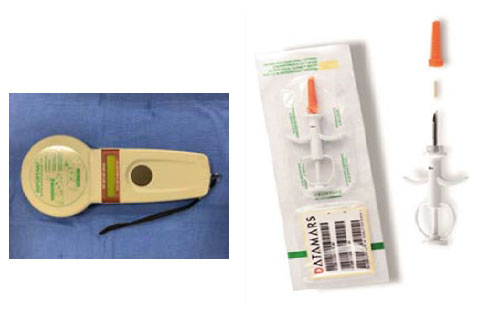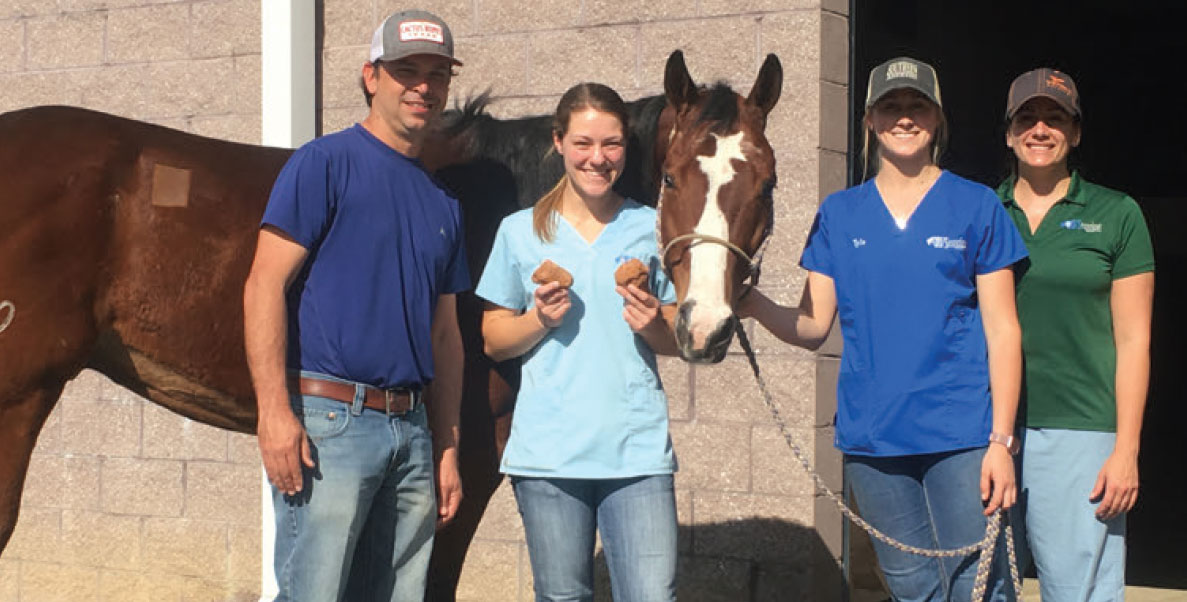Clostridial myonecrosis is a rapidly progressive necrosis of muscle. Clostridial refers to bacteria from the genus Clostridium. Myonecrosis refers to death of living muscle tissue.
Clostridial myonecrosis is a rapidly progressive necrosis of muscle. Clostridial refers to bacteria from the genus Clostridium. Myonecrosis refers to death of living muscle tissue.
Clostridia are gram-positive, spore forming, anaerobic bacteria that are commonly found in the environment.
The most commonly involved organism in cases of clostridium myonecrosis is C. perfringens, however a variety of clostridia can cause myonecrosis to include C. septicum, C. sporogenes, and C. sordellii.
Other terms used to describe intramuscular colonization and infection with Clostridium spp. are termed clostridial myositis, clostridial cellulitis, malignant edema, or gas gangrene.
PATHOGENSIS OF DISEASE:
External Inoculation of spores: Clostridia spores may be deposited or inoculated into the horse’s muscle.
This can happen with an intramuscular injection with an irritating medication or a deep laceration that affects the muscle belly.
Most of the time, wounds/intramuscular injections do not result in clostridial myonecrosis due to the tissue remaining well oxygenated so the spores cannot grow.
However, if the muscle is damaged or inflamed and the blood supply and oxygen becomes very low the risk of clostridial myonecrosis increases significantly.
Growth of “resident spores”:
It has been documented in the literature that some healthy horses have clostridia spores present in their muscle.
These particular spores normally do not cause any problems and cannot grow as long as the tissue/muscle is well oxygenated.
If for some reason the oxygen supply changes to the muscle for example after intramuscular injection with an irritating substance such as banamine, the spores can start to grow and traumatize the tissue.
What drugs are at higher risk of causing this?
Clostridial myonecrosis is most often seen in horses following an intramuscular injection with Banamine (Flunixine Meglumine).
Other substances that have been associated with clostridial myonecrosis following intramuscular injections are: ivermectin, antihistamines, dipyrone, B vitamins, and phenylbutazone.
Intravenous injections DO NOT cause clostridial myonecrosis if they are done properly and the medication does not leak into surrounding tissue.
CLINICAL SIGNS:
- Swelling over the infected area where the IM injection was given. This is usually reported in the neck as this is the most common site for an owner to give medication. Swelling can range from mild to severe and usually seen 6-72 hours from IM injection.
- Animals can be reluctant to move due to pain and inflammation.
- Crepitus or subcutaneous emphysema can be palpable due to gas production in the infected/inflamed tissues. However, the absence of this does not rule out the diagnosis.
- Some horses rapidly progress to signs of SIRS (systemic inflammatory response syndrome) to include fever, tachycardia (increased heart rate), increased respiratory rate, depression, toxemic shock, laminitis, and even death.
- In very rare cases horses may die before swelling becomes obvious.
DIAGNOSIS:
- A tentative diagnosis can be made based on the horse’s clinical sigs and rapid swelling of the muscle especially following a very deep wound or intramuscular injection in the area.
- Ultrasound can be used to identify any gas pockets/fluid in the affected tissue.
- Identification of the Gram positive bacteria based on aspiration of fluid with confirmation of culture of clostridia from the infected site.
- Fluorescent antibody test can also be performed to detect the Clostridium species present in the fluid.
TREATMENT:
QUICK, AGGRESSIVE TREATMENT IS ESSENTIAL!
- Horses with this condition require immediate, aggressive (and often expensive) treatment. A few hours can make a significant difference in the outcome of survival.
- Approximately 30-73% of horses will survive with treatment!
- An essential component of treatment is surgical fenestration (see picture) or opening the swollen tissue to allow fluid and gas to escape and allow oxygen to reach the affected tissue to stop the growth of spores. This requires your veterinarian to make large deep cuts with ultrasound guidance. This may seem dramatic but it is very necessary as a part of treatment. Proper care of the wounds after is required.
- Other treatments in conjunction with surgical fenestration include:
- High doses of antibiotics
- Anti-inflammatory medication/pain relief
- IV fluids
- Supportive medical care in hospital
PROGNOSIS:
The prognosis is always guarded with a horse that has developed a clostridial myonecrosis. The toxins produced by Clostridium species are very powerful and complications can arise that rapidly lead to death. It is critical that any horse suspected of having clostridial myonecrosis be examined by a veterinarian as soon as possible to enable the best chance for survival.
PREVENTION?
- AVOID intramuscular injections with irritating substances such as Banamine (Flunixin Meglumine)
- There is no evidence in the scientific literature that wiping the injection site with alcohol before inserting the needle helps to prevent infection (although there is no reason not to wipe with alcohol). Clostridia spores are resistant to alcohol.
- There is no way to prevent accumulation of clostridial spores in healthy muscle so there is always a risk that some spores can grow post banamine injection.
- Contact your veterinarian before administering medications or with any questions or concerns regarding your horse’s wellbeing.
“An ounce of prevention is worth a pound of cure”
~Benjamin Franklin
References:
Peek, S.F. and Semrad, S.D. 2002. Equine Veterinary Education. 14(3):163-168.
Robinson E. and Sprayberry K. 2009. Current Therapy in equine Medicine 6th Edition. Saunders.



